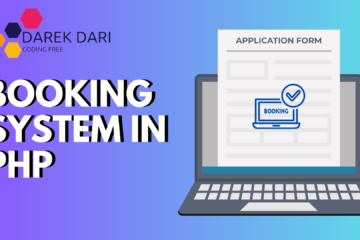
Table of Contents
Introduction to Personal Blog with PHP
Starting your own blog is a fulfilling project that lets you demonstrate your web development and writing abilities. We’ll walk you through the steps of creating a simple PHP personal blog in this tutorial.
PHP Projects:
- Quiz Application in PHP
- PHP Image Gallery Project Source Code
- Best 200 Questions Game in PHP
- Bulletin Board PHP Project
- Content Management System (CMS) PhP Project
- Event Management System Project in PHP
- Personal Blog with PHP
- Chatbot in PHP
- URL Shortenee in php
Features like article publication, comments, and user authentication are included in this basic sample.
examples of blogs
File Structure
Let’s quickly review the file structure before getting into the code:
/blog
|-- index.php
|-- login.php
|-- logout.php
|-- register.php
|-- dashboard.php
|-- article.php
|-- comment.php
|-- includes
| |-- db.php
| |-- functions.php
| |-- header.php
| |-- footer.php
|-- css
| |-- style.css
Home Page (index.php)
The home page displays a list of articles. Users can click on an article to read more.
<?php
session_start();
require_once 'includes/header.php';
require_once 'includes/functions.php';
?>
<div class="container">
<h2>Welcome to My Blog!</h2>
<?php
$articles = getArticles();
foreach ($articles as $article) {
// Display articles
}
?>
</div>
<?php require_once 'includes/footer.php'; ?>
Individual Article Page (article.php)
On this page, there is only one article with comments. When logged in, users have the ability to leave comments.
<?php
session_start();
require_once 'includes/header.php';
require_once 'includes/functions.php';
if (isset($_GET['id'])) {
// Display individual article and comments
} else {
header('Location: index.php');
exit();
}
require_once 'includes/footer.php';
blogger examples blogging examples blogs examples example blog example of a blog
Handling Comments (comment.php)
This script handles the submission of comments.
<?php
session_start();
require_once 'includes/functions.php';
if ($_SERVER['REQUEST_METHOD'] === 'POST') {
// Handle comment submission
}
header('Location: article.php?id=' . $articleId);
exit();
Building a Simple Personal Blog with PHP
Creating your own personal blog is a rewarding project that allows you to showcase your writing and web development skills. In this article, we’ll guide you through the process of building a basic personal blog using PHP. This simple example includes features like article publishing, commenting, and user authentication.
File Structure
Before diving into the code, let’s take a quick look at the file structure:
luaCopy code
/blog |-- index.php |-- login.php |-- logout.php |-- register.php |-- dashboard.php |-- article.php |-- comment.php |-- includes | |-- db.php | |-- functions.php | |-- header.php | |-- footer.php |-- css | |-- style.css
Home Page (index.php)
The home page displays a list of articles. Users can click on an article to read more.
phpCopy code
<?php session_start(); require_once 'includes/header.php'; require_once 'includes/functions.php'; ?> <div class="container"> <h2>Welcome to My Blog!</h2> <?php $articles = getArticles(); foreach ($articles as $article) { // Display articles } ?> </div> <?php require_once 'includes/footer.php'; ?>
Individual Article Page (article.php)
This page displays a single article along with comments. Users can leave comments if they are logged in.
phpCopy code
<?php session_start(); require_once 'includes/header.php'; require_once 'includes/functions.php'; if (isset($_GET['id'])) { // Display individual article and comments } else { header('Location: index.php'); exit(); } require_once 'includes/footer.php';
blog site free blogging sites free free blog sites
Handling Comments (comment.php)
This script handles the submission of comments.
phpCopy code
<?php session_start(); require_once 'includes/functions.php'; if ($_SERVER['REQUEST_METHOD'] === 'POST') { // Handle comment submission } header('Location: article.php?id=' . $articleId); exit();
Database Connection (includes/db.php)
This file establishes a connection to the database.
<?php
$host = 'localhost';
$dbname = 'blog';
$username = 'root';
$password = '';
$conn = new PDO("mysql:host=$host;dbname=$dbname", $username, $password);
$conn->setAttribute(PDO::ATTR_ERRMODE, PDO::ERRMODE_EXCEPTION);
Database Functions (includes/functions.php)
This file contains functions for retrieving articles, comments, and adding comments.
<?php
require_once 'db.php';
function getArticles() {
// Retrieve articles from the database
}
function getArticleById($id) {
// Retrieve an article by ID
}
function getCommentsByArticleId($articleId) {
// Retrieve comments for an article
}
function addComment($articleId, $username, $content) {
// Add a comment to the database
}
blog sites blogging sites personal websites personal website
FAQ
- How to create a blog application with PHP?
- Use PHP for server-side scripting.
- Implement a database for storing blog posts and comments.
- Design a user interface for article display and interaction.
- How to create a dynamic blog in PHP?
- Utilize PHP to generate dynamic content.
- Incorporate a database to store and retrieve blog posts.
- Implement user authentication and commenting features.
- What is the best blog PHP script?
- Several options like WordPress, Joomla, and Drupal are popular.
- Choose based on your specific needs, preferences, and development expertise.
- How do I make a personal blog from scratch?
- Start with HTML for the structure.
- Use PHP for server-side functionality.
- Integrate a database for content storage.
- Add CSS and JavaScript for styling and interactivity.
- Can PHP make a website dynamic?
- Yes, PHP is widely used for creating dynamic websites by generating content based on user interactions and data from databases.
- Can PHP generate dynamic page content?
- Absolutely, PHP excels at dynamically generating page content based on various conditions, user input, or data from external sources.
- Can PHP create HTML?
- Yes, PHP can generate HTML code dynamically, making it a powerful tool for creating dynamic web pages.
- Can I use PHP on a static website?
- While PHP is commonly used for dynamic websites, you can also use it on a static website for server-side tasks, like handling forms or processing data.
- Is PHP website static or dynamic?
- PHP is often associated with dynamic websites, but it can be used in both static and dynamic contexts.
- Do modern websites use PHP?
- Yes, many modern websites, especially content management systems like WordPress, use PHP for server-side scripting.
- Are static pages more SEO friendly?
- Static pages are often considered more SEO-friendly due to simplicity and faster loading times, but dynamic sites can also be optimized for search engines.
- Is Youtube static or dynamic?
- YouTube is a dynamic website. It relies on various technologies, including PHP, for user interactions, video recommendations, and dynamic content delivery.
- Is PHP still good to learn in 2023?
- Yes, PHP remains relevant in 2023, especially for web development. It’s used in conjunction with modern frameworks like Laravel.
- Is PHP a dying language?
- No, PHP is not a dying language. It continues to be widely used and supported, especially in web development.
- Why no one uses PHP anymore?
- This statement is not accurate. PHP is still extensively used, but there are alternative technologies, and developers may choose languages based on specific project requirements and preferences.
In summary
This entry-level personal blog acts as a basis for additional functionality. In order to store articles and comments, you can investigate database integration, apply user registration, and improve security. Please feel free to add to and modify this project to make it uniquely yours. Have fun coding!
free blogging blog platforms free personal blogs websites personal blogging websites personal blogging site personal writing blogs
Learn more
blogs about personal life personal life bloggers personal life blogs personal blogs names names for a personal blog personal life blog wordpress theme for personal blog




5 Comments
binance h"anvisningskod · March 18, 2024 at 5:12 pm
grat article thanks
Apkpure Games Download · April 19, 2024 at 1:21 am
Appreciate the recommendation. Let me try it
out.
eragonfilm.com · April 19, 2024 at 4:15 am
Very soon this web site will be famous among all blogging visitors, due to
it’s nice articles or reviews
amazon affiliate shopify · April 21, 2024 at 6:00 am
Hi, I check your blog like every week. Your writing style is amazing, keep doing what
you’re doing!
Waste King · April 22, 2024 at 11:21 pm
Hello There. I found your blog and i liked it. This is a very smartly
written article. I’ll be sure to bookmark it and return to read more of your helpful info.
Thank you for the post. I will definitely comeback.